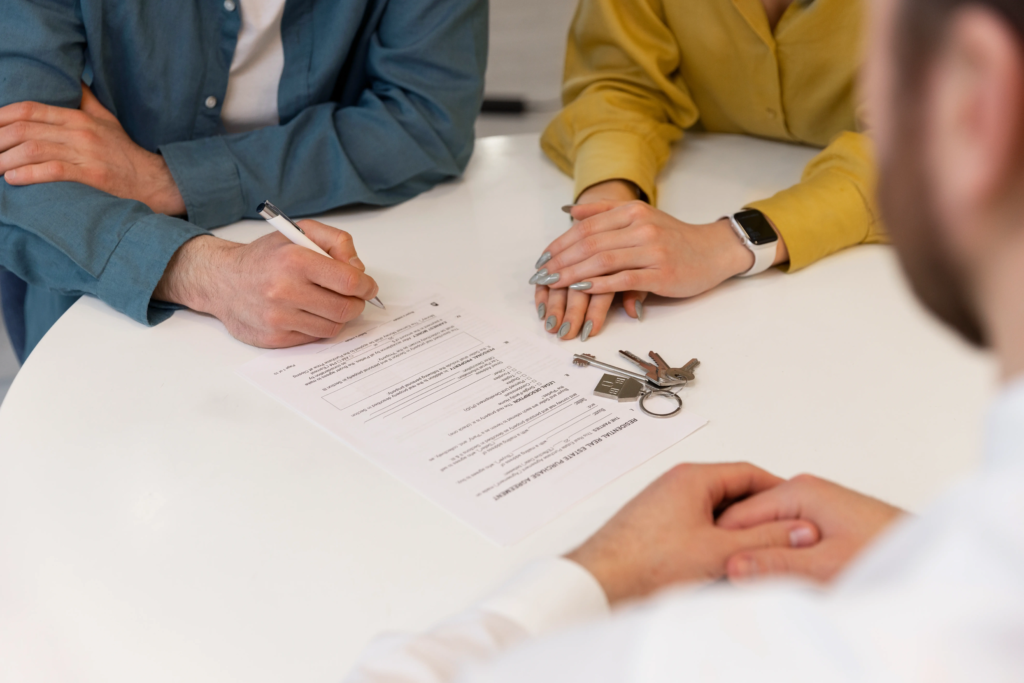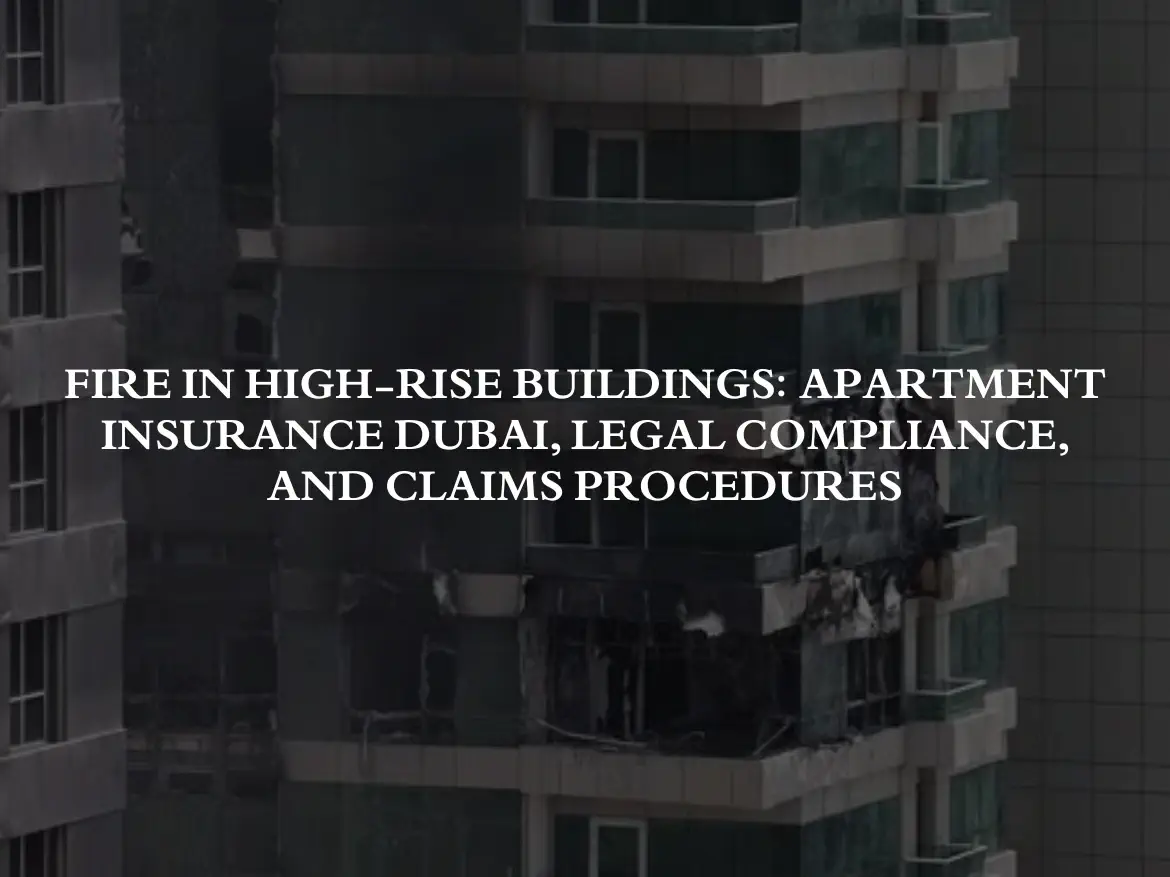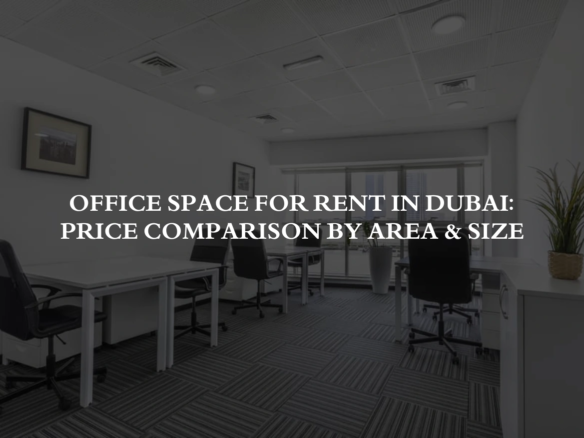Home Insurance For Apartments is one of the most important things at present times. Once more highlighting the pressing need of clear insurance strategies in high-rise residential projects, the recent fire at Marina Pinnacle in Dubai Marina on June 13, 2025, Although the fire, which displaced over 3,800 people from a 67-story tower, was contained without injuries, it left major structural damage and questions about liability. This event has raised important issues, including who should be insuring the structure. UAE legislation calls for what kind of coverage? And in such situations, what can owners and developers do to safeguard their interests? Let’s see how technicalities and home insurance for apartments in Dubai’s buildings might be influenced by fire accidents.
Jointly owned properties' insurance is under whose responsibility?
Residential towers are sometimes categorized as jointly owned properties in the UAE, particularly in emirates like Dubai, where freehold ownership is rather common. These buildings comprise common areas (lobbies, elevators, façades, roofs, etc.) and privately owned units (apartments). Until the Owners’ Association (OA) is formally registered and handed management of the building, the developer bears the main responsibility for insuring the shared areas and building construction.
Nevertheless, most developers keep the building insurance policy even after handover since the law does not now give owners’ associations full legal capacity. OAs thus cannot independently enter into or enforce insurance contracts, so exposing unit owners to a risk. Although the developer owns the master Home Insurance For Apartments, it is sometimes unknown whether this coverage covers shared facilities and structural elements only or individual units.
Home Insurance For Apartments Policies: What Legal Requirements Apply?
Under the UAE‘s legal system, no one consistent insurance law exists that prescribes particular guidelines for all kinds of property ownership. Rather, rules originate from several sources, including Real Estate Regulatory Agency (RERA Insurance Rules) recommendations for Dubai jointly owned homes.
- Federal Law No. 6 of 2007 about Agents and Insurance Companies.
- Standard building contracts could have clauses requiring particular insurance coverage both during and after development.
Actually, developers are supposed to set property all-risk insurance for the whole construction, usually comprising
- structural harm
- Fire and explosive force
- Liability for harm done to third parties
Usually, though, this master policy does not cover personal contents within individual units.
- Losing rental income
- Spending on temporary accommodation
- Fixtures and enhancements brought about by owners
Unit owners must also get their own insurance for furniture, interior finishes, and any financial loss resulting from displacement or rent loss & Home Insurance For Apartments.
Following a fire: The Insurance Method

Should a fire strike, as it did at Marina Pinnacle, the process of filing an insurance claim calls for several participants. Usually, this looks like this:
Crisis Reaction and Damage Evaluation
Attending the scene, Dubai Civil Defence generates an incident report. Starting an insurance claim depends on this report becoming a vital record.
Claim Initiates Developer or OA
The developer (or OA, if empowered) owns the master insurance policy; thus, they have to notify the insurer and provide pertinent records, including building assessments, civil defense reports, and repair estimates.
Surveyor of Insurance Examines Damage
Examining the site, an insurance-appointed assessor gauges the degree of damage and decides what falls within policy limits
Payback & Corrections
Once liability is accepted, the insurance company distributes the money—usually straight to the policyholder, either the developer or the OA. The common areas and structure are restored using these monies. For individual owners, this process gets more complex. Should they lack personal insurance, they could be left without reimbursement for furniture lost, interior damage, or lodging expenses. Even if the fire started outside their apartment, their claim for compensation depends on whether the developer’s policy specifically covers their property.
Procedural and Legal Difficulties in Home Insurance For Apartments
The legal position of owners’ associations is one of the main concerns in UAE real estate Home Insurance For Apartments. OAs are given legal personhood in many countries around the world, so enabling them to engage in contracts, sue, and be sued. OAs are not regarded as full legal entities in the UAE, though, and frequently run through management companies. Their lack of capacity limits their ability to directly oversee insurance, negotiate terms, or independently seek claims.
Under UAE law, also, proving negligence or liability—that is, against contractors or architects—is challenging. Owners cannot readily seek claims outside of their insurance coverage unless a clear design or construction flaw started the fire. The only legal theory that might apply even in cases of structural problems is decennial liability, which holds contractors liable for major structural flaws for up to ten years—but not for fire hazards resulting from flammable materials like cladding.
The following steps are advised to help to solve these problems and get ready for risks connected to fires:
- Share copies of the master policy with owners and make sure it unequivocally covers all pertinent hazards, including cladding fires.
- To cover contents, interior finishes, and rent loss, owners should also get extra house insurance policies.
- Owners’ associations should advocate for legislative changes providing them complete legal standing to oversee insurance on their own.
- RERA Insurance Rules should take into account requiring all jointly owned properties to have thorough building insurance, including unit-level cover.
Conclusion
Fires such as the one at Marina Pinnacle highlight the need of having thorough, well-defined insurance plans in place for tall buildings. Lack of clarity can turn a structural crisis into a financial one when ownership is often divided among hundreds of people and legal obligations are divided between developers and management bodies. Developers and residents have a responsibility to actively control risk by well-organized and completely understood Home Insurance For Apartments until legal systems change to provide owners’ associations more control.
Often Asked Questions (FAQs)
In most jointly owned buildings, the developer provides building insurance for the rental property until the Owners’ Association (OA) is fully registered and empowered. However, developers often keep control of insurance even after the property is handed over, making it unclear to owners what coverage they have.
Usually not. Building insurance for rental property typically covers the structure and common areas (elevators, façades, and lobbies), but not the contents or upgrades inside privately owned units. Homeowners need to get separate insurance for the inside, the furniture, and rent loss.
- Civil Defense prepares a fire incident report.
- The developer or OA (who holds the building insurance for rental property) submits a claim.
- An insurance surveyor assesses the damage.
- Compensation is issued for structural repair, but individual unit losses are only covered if the owner has personal insurance.





Join The Discussion